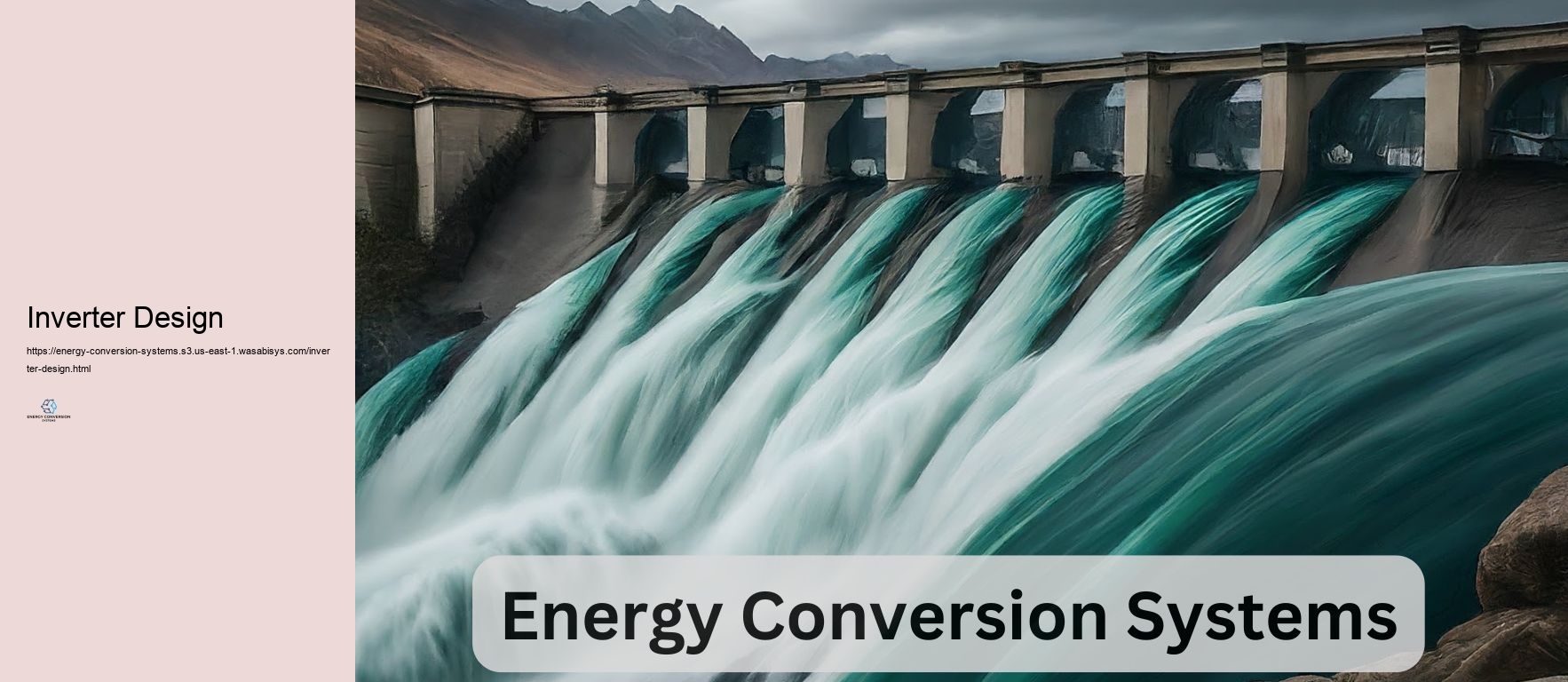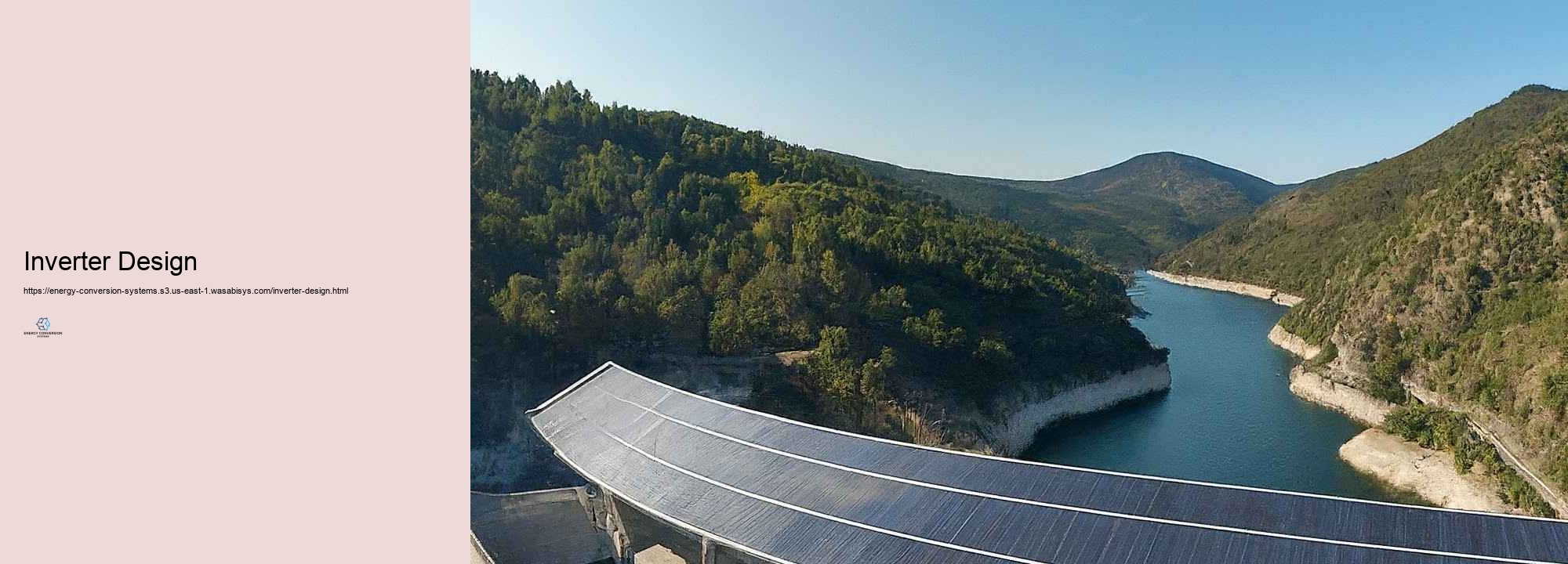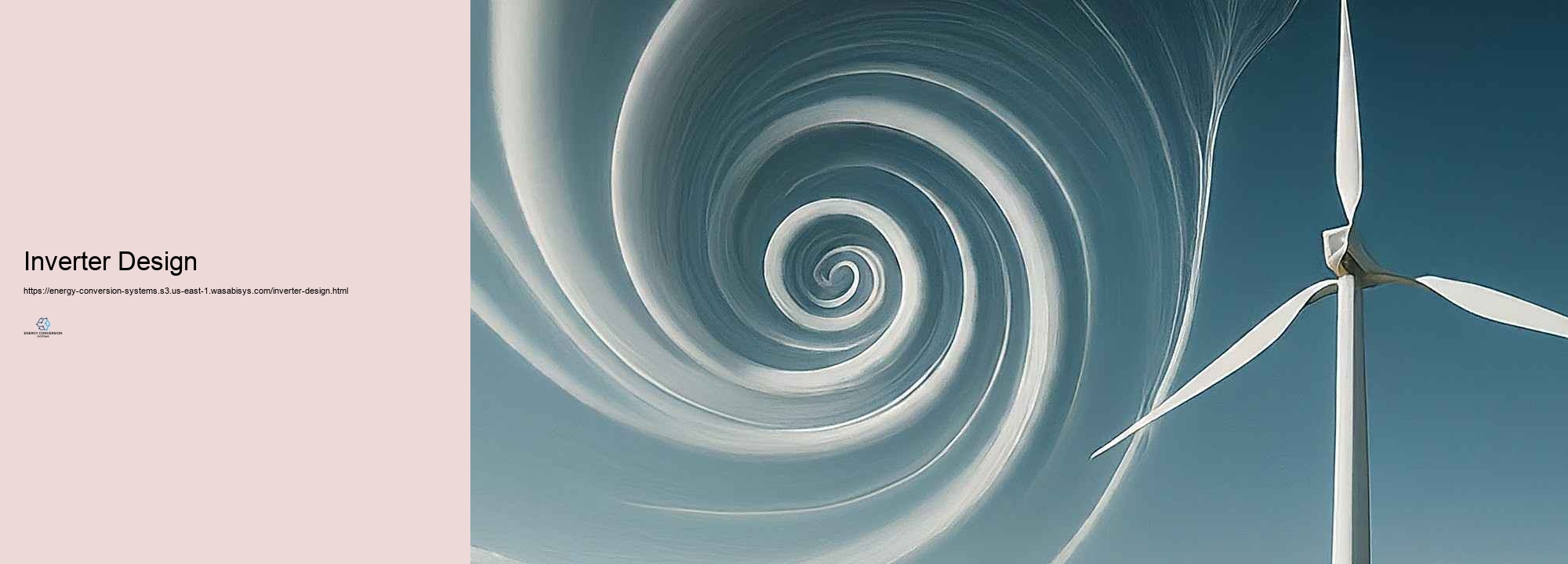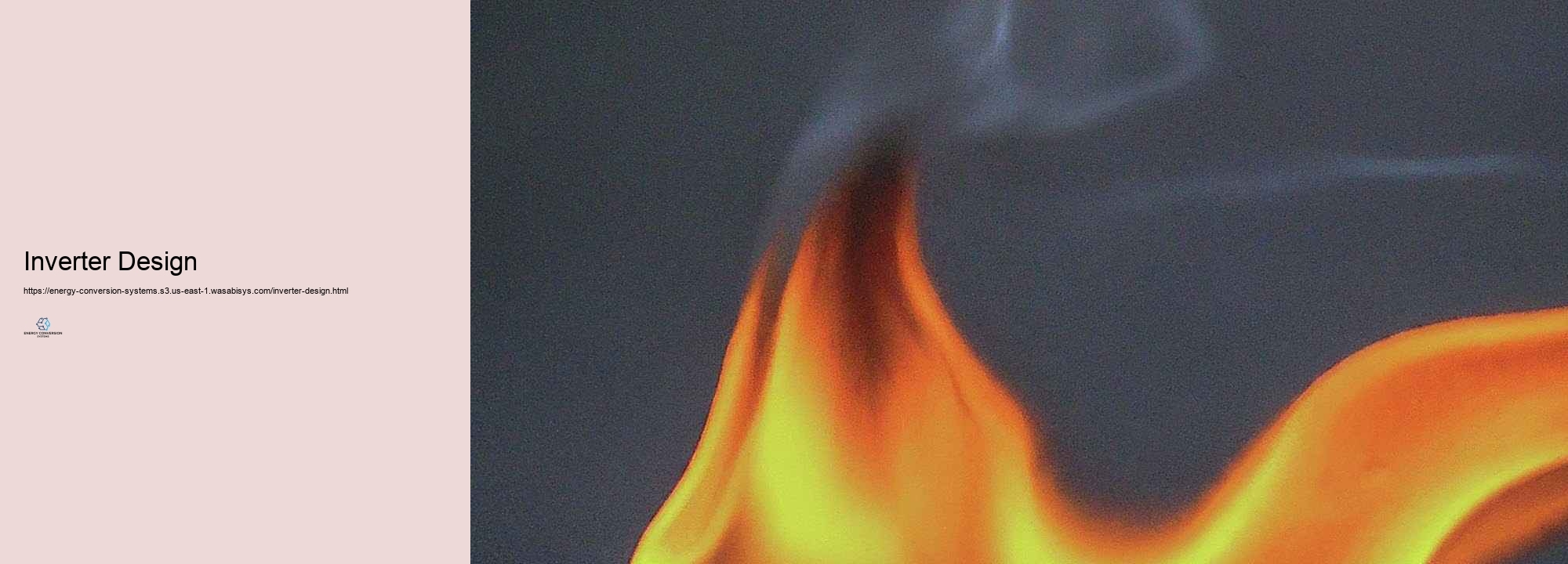

Energy conversion systems play a vital function in contemporary culture, making it possible for the remodeling of numerous kinds of energy right into better and valuable kinds. These systems are fundamental to power generation, transportation, commercial procedures, and daily modern-day innovations. Recognizing the concepts and applications of energy conversion systems is crucial for designers, policymakers, and anybody interested in the location of energy. At its core, energy conversion is controlled by the laws of thermodynamics. The initially legislation of thermodynamics, which specifies that energy can not be developed or damaged nevertheless only changed from one kind to an added, is the foundation of all energy conversion systems. The Second regulation presents the concept of degeneration and performance, reviewing why no energy conversion treatment can be 100% effective. These fundamental principles underpin the design and procedure of all energy conversion systems. Amongst one of the most typical and substantial energy conversion systems is the thermal nuclear power plant. These centers convert the chemical energy saved in nonrenewable fuel resources (such as coal, oil, or gas) or nuclear gas right into electrical energy. The procedure normally requires burning the gas to heat water, creating vapor that drives a wind turbine connected to a generator. This system, based upon the Rankine cycle, is an archetype of converting thermal energy to power and after that to electric energy. Modern thermal nuclear power plant use different approaches to improve effectiveness, such as supercritical heavy vapor issues and combined cycle systems. Renewable resource systems represent an extra important team of energy conversion. Solar solar (PV) panels transform light energy straight right into electric energy with the photoelectric result. Wind wind generators change the kinetic energy of transferring air right into mechanical energy and after that right into electricity. Hydroelectric nuclear reactor harness the possible energy of water kept at elevation, changing it to power through turbines and after that to electrical energy. Each of these systems has its one-of-a-kind principles and difficulties, yet all satisfy of changing normally occurring energy right into a lot more practical kinds. Inner burning engines, widely utilized in transport and some power generation applications, change the chemical energy in gas into mechanical energy through managed surges. These engines, whether gas or diesel, operate thermodynamic cycles (such as the Otto cycle or Diesel cycle) that entail compression, combustion, growth, and exhaust phases. The performance of these engines has in fact been continuously improved via technologies in products, gas shot systems, and exhaust gas therapy modern innovations. Gas cells stand for a cutting-edge energy conversion system that directly changes chemical energy right into electric energy without burning. These devices use electrochemical actions to produce electrical energy, with hydrogen being a typical gas. Gas cells have applications differing from portable power sources to large repaired power generation, and they supply the opportunity for high efficiency and low discharges. Heatpump and refrigeration systems are energy conversion systems that relocate warm from one area to an extra, successfully transforming electric energy right into thermal energy transfer. These systems, which run the vapor compression cycle or absorption cycle, are extensively made use of for home heating, cooling, and refrigeration in property, industrial, and industrial setups. The performance of heat pumps is typically shared as a coefficient of efficiency (POLICE), which can be more than one, as they step warm as opposed to develop it directly. Electrochemical energy conversion systems, such as batteries and supercapacitors, play a vital task in energy storage space and mobile power applications. These gizmos change chemical energy into electric energy (throughout discharge) and vice versa (throughout payment). The principles of electrochemistry control their procedure, with recurring research study focusing on improving energy density, power density, and cycle life. Thermal Power Plants Thermoelectric devices represent a distinctive kind of energy conversion, directly changing temperature level distinctions into electric energy (Seebeck impact) or utilizing electric energy to generate a temperature level difference (Peltier impact). Inverter Design While presently restricted in efficiency, these solid-state tools have applications in waste warmth recovery, cooling down systems, and space exploration. Magnetohydrodynamic (MHD) generators are an ingenious energy conversion system that right transforms thermal energy right into electrical energy without moving parts. By passing a high-temperature, electrically conductive liquid with an electromagnetic field, these systems develop power. While still generally speculative, MHD generators hold promise for high-temperature, high-efficiency power generation. The application of energy conversion systems lengthens across various fields. In the power generation market, substantial thermal, nuclear, and renewable resource systems give electrical energy to the grid. In transport, interior combustion engines, electrical motors, and arising modern-day innovations like gas cells power vehicles. Industrial procedures count on a range of energy conversion systems for heating, a/c, and powering equipment. In the household and service areas, air conditioning and home heating systems, lighting, and devices all include energy conversion. Effectiveness improvement is a regular emphasis in the advancement of energy conversion systems. This consists of not just enhancing the performance of certain aspects however furthermore boosting entire systems and including numerous technologies. As an example, consolidated warm and power (CHP) systems enhance general energy application by recording waste warm from electrical energy generation for heating or business procedures. The ecological impact of energy conversion systems is an increasingly crucial consideration. Lots of efforts are concentrated on reducing tires from fossil fuel-based systems, improving the efficiency and honesty of renewable energy systems, and developing brand-new, cleaner innovations. The concept of life cycle evaluation is important in examining genuine eco-friendly effect of different energy conversion systems, taking into account variables such as source extraction, manufacturing, treatment, and disposal. Energy conversion systems are necessary to contemporary people, making it possible for the application of different energy resources to please human needs. From large-scale power generation to private electronic devices, these systems are common in our lives. As technology developments and ecological worries grow, the location of energy conversion continues to be to establish, with constant {research and development targeted at enhancing efficiency, decreasing eco-friendly effect, and harnessing brand-new energy sources. Identifying the principles and applications of these systems is important for addressing the energy difficulties of the future and moving towards a far more lasting energy landscape.
Energy conversion modern technologies go to the center of changing how we harness and use energy, playing a vital role in the change towards lasting and efficient energy systems. From photovoltaics to gas cells, these developments incorporate a diverse selection of tools that transform natural energy sources right into practical kinds, such as power, heat, and gas. Each advancement operates distinct concepts and is in shape to particular applications, providing distinct advantages and problems. Recognizing these technologies is important for advancing energy solutions that deal with worldwide energy demands while minimizing ecological influence. Photovoltaics (PV) represent among one of the most generally identified kinds of solar energy conversion. These systems use semiconductor products, normally silicon, to convert sunlight straight right into electric energy with the photovoltaic or pv effect. When sunlight strikes the surface area of a PV cell, it thrills electrons, creating an electrical existing. Photovoltaic or pv development has progressed significantly for several years, with improvements in products and design resulting in boosted performance and lowered expenditures. Developing technologies, such as thin-film solar batteries and organic photovoltaics, are pushing the borders of efficiency and adaptability, making solar power a great deal more obtainable and versatile to different applications, from home roofs to large solar ranches. Concentrated solar energy (CSP) is another solar energy conversion modern-day technology that varies from photovoltaics by using mirrors or lenses to focus sunshine onto a tiny location, generally a receiver. The focused light is converted into heat, which is afterwards used to produce heavy vapor that drives a wind generator linked to an electrical generator. CSP systems are particularly trusted in areas with high right sunlight and can integrate thermal energy storage space solutions to offer power additionally when the sunlight is not radiating. This capability to save energy as heat licenses CSP plants to give an extra secure and reliable power output contrasted to common solar PV systems. Gas cells are a flexible energy conversion innovation that generates electrical power via an electrochemical reaction, usually involving hydrogen and oxygen. Unlike combustion-based power generation, gas cells generate power without shedding fuel, causing lowered discharges and greater effectiveness. There are many sorts of gas cells, each determined by the electrolyte made use of and the operating temperature level range. Polymer electrolyte membrane layer (PEM) gas cells, as an instance, are known for their high power thickness and are commonly utilized in transport applications, such as fuel cell lorries. Strong oxide gas cells (SOFCs), on the various other hand, operate at greater temperatures and proper for taken care of power generation and commercial applications. Hydroelectric power is a reputable energy conversion modern innovation that benefits from the kinetic energy of moving water to generate electric energy. By guiding water by means of turbines, hydroelectric plants change the energy of moving water right into power, which is then changed right into electric energy by generators. This innovation is very trustworthy and can supply a normal and reputable power supply, making it a structure of renewable resource accounts in great deals of countries. Nonetheless, the environmental effect of huge hydroelectric work, such as environment disturbance and modifications to water environments, calls for cautious planning and management. Wind energy conversion modern-day technologies catch the kinetic energy of wind using wind turbines, which convert it into power and subsequently into electrical energy. Wind wind generators are frequently set up in locations with strong and continuous wind patterns, such as coastal regions and open degrees. Innovations in wind turbine format, such as bigger blades dimensions and taller towers, have significantly boosted the performance and capacity of wind power generation. Offshore wind cattle ranches are likewise obtaining grip, using the possible for substantial energy generation with low land usage impact. Geothermal energy conversion take advantage of the Earth inner heat to create electrical power and give straight home heating applications. Geothermal power plants utilize heavy steam or warm water from underground tank to drive generators and produce electrical energy. This contemporary innovation is extremely reliable and can give a consistent power supply, as geothermal sources are not subject to the irregularity seen in solar and wind energy.
Energy conversion systems are important to contemporary society, playing a vital function in changing raw energy sources right into useful power that fuels homes, markets, and transportation. These systems include a variety of modern technologies and procedures established to convert energy from one kind to another, such as transforming chemical energy in gas to power in engines or electric energy in nuclear reactor. An extensive test of the crucial components in energy conversion systems exposes the intricacy and course associated with properly harnessing and making use of energy resources. Understanding these components is essential for enhancing efficiency, enhancing performance, and reducing ecological influence. The beginning factor of any kind of energy conversion system is the energy resource, which can be environmentally friendly or non-renewable. Renewable energy sources contain solar, wind, hydroelectric, geothermal, and biomass, while non-renewable resources include nonrenewable fuel sources like coal, oil, and gas, in addition to atomic energy. The option of energy source considerably affects the layout and procedure of the conversion system, as each resource has one-of-a-kind features, such as ease of access, energy density, and ecological impact. As an example, solar energy systems depend on solar cells or solar thermal collection agencies to document sunlight, while fossil fuel-based systems use combustion treatments to release energy saved in chemical bonds. At the heart of any kind of sort of energy conversion system is the energy conversion device, which changes the key energy resource right into a various kind of energy. Typical conversion devices consist of generators, engines, generators, and fuel cells. Generators, utilized in both nonrenewable fuel source and renewable energy systems, convert kinetic energy from hefty vapor, water, or wind into power, which is afterwards transformed into electric energy by generators. Internal melting engines, common in transport, transform chemical energy from gas right into power via regulated surges. Fuel cells, on the numerous other hand, directly transform chemical energy from hydrogen or numerous other fuels right into electrical energy through electrochemical responses, supplying high performance and minimized exhausts. Warmth exchangers are crucial components in several energy conversion systems, particularly those consisting of thermal procedures. These devices aid with the transfer of cozy in between 2 or a lot more fluids without blending them, enhancing the efficiency of energy conversion. In power plants, cozy exchangers are made use of to transfer warmth from burning gases to water, creating vapor that drives generators. In a/c systems, they step warm in between interior and exterior ambiences, controling temperature and improving energy efficiency. The design and item alternative for warmth exchangers are essential for enhancing warmth transfer prices and lowering energy losses. Control systems are vital for the safe and reputable operation of energy conversion systems. They keep an eye on and regulate various criteria, such as temperature degree, pressure, flow price, and voltage, ensuring that the system runs within defined restrictions and reacts effectively to modifications prominent or operating problems. Advanced control systems take advantage of sensors, actuators, and solutions to improve efficiency, improve honesty, and lower energy intake. In contemporary nuclear power plant, electronic control systems make it possible for real-time checking and automation, making it possible for vehicle drivers to make data-driven choices and perform expecting upkeep strategies. Energy storage area parts are considerably vital in energy conversion systems, specifically those relying upon regular environmentally friendly sources like solar and wind. Storage area systems, such as batteries, flywheels, and pumped hydro storage area, shop excess energy created throughout durations of low demand and release it when demand is high, ensuring a stable and reliable power supply. The adaptation of energy storage space boosts the convenience and stamina of energy systems, making it possible for much better lots management and reducing dependancy on fossil fuel-based backup power. The development of innovative storage space modern-day technologies, such as lithium-ion and solid-state batteries, continues to drive renovations in energy density, efficiency, and cost-effectiveness. When energy is converted into a useful type, it needs to be transferred and distributed to end-users. Transmission and circulation systems make up a network of transformers, power lines, substations, and circulation lines that offer power from power plants to homes, companies, and markets. Efficient transmission and blood circulation are vital for decreasing energy losses and ensuring a relied on power supply. Advancement such as high-voltage straight existing (HVDC) transmission and clever grid innovations are improving the performance, capability, and stability of power networks, promoting the adaptation of renewable resource sources and improving grid administration. Environmental management systems are essential to energy conversion systems, especially those including melting procedures. These systems are developed to minimize the ecological result of energy conversion by lessening exhausts of contaminants such as sulfur dioxide, nitrogen oxides, fragment matter, and carbon dioxide. Technologies such as scrubbers, selective catalytic decrease (SCR), and carbon capture and storage (CCS) are used to record and manage wears down before they are released into the setting. The application of environmental protection systems is necessary for compliance with ecological standards and for minimizing the effect of energy conversion on air excellent quality and climate adjustment. Improving the efficiency of energy conversion systems is an important emphasis for decreasing energy consumption and ecological impact.
Discover the latest advancements in energy conversion systems, from solar and wind to fuel cells and biomass! Learn how these innovations are driving sustainable energy solutions for a cleaner, more efficient future.https://t.co/9SfMjPHIu9
— Turbine Training And Operation (@turbinetraine) August 25, 2024


Improving performance in energy conversion is a vital goal in the pursuit of sustainable and economical energy production. As global energy demand remains to increase, boosting the efficiency of energy conversion treatments has actually become considerably important for reducing source intake, lessening eco-friendly effects, and ensuring energy defense. This undertaking includes a large range of methods and improvements throughout various energy markets, from traditional fossil fuel-based systems to renewable energy technologies. Amongst the key areas of focus for boosting energy conversion efficiency is in thermal nuclear power plant, which stay a significant resource of power worldwide. Advanced burning advancements, such as supercritical and ultra-supercritical vapor cycles, have been established to boost the performance of coal-fired nuclear power plant. These systems operate at higher temperature levels and stress and anxiety than conventional plants, enabling higher thermal effectiveness and reduced gas consumption. In a similar means, consolidated cycle gas generator (CCGT) plants, which utilize both gas and vapor generators, can achieve effectiveness of as high as 60%, considerably more than basic single-cycle plants. Waste warmth healing systems represent an additional crucial strategy for improving energy conversion effectiveness. In many industrial treatments and power generation systems, a considerable quantity of warm is shed to the setting. By implementing technologies such as all-natural Rankine cycles (ORC) or thermoelectric generators, this waste heat can be recorded and converted into beneficial power. This not just boosts general system effectiveness yet likewise minimizes the demand for added energy input, causing set you back monetary savings and minimized ecological impact. In the world of renewable energy, constant advancements are driving renovations in energy conversion efficiency. For solar solar (PV) systems, developments in cell design and items have in fact caused stable rises in conversion performance. Multi-junction cells, which usage a number of layers of semiconductor products to capture various portions of the solar range, have actually achieved performance going beyond 40% in laboratory configurations. Emerging modern technologies such as perovskite solar cells show guarantee for even more performance improvements and cost reductions in solar power conversion. Wind energy conversion has in addition seen considerable performance enhancements with technological technologies. Larger wind generator sizes, progressed blade designs, and enhanced control systems have raised the capability variable of wind ranches. Furthermore, the development of offshore wind innovation has opened up new chances for capitalizing on stronger and extra constant wind resources, even more increasing energy conversion efficiency. In the field of energy storage space, which is important for managing the intermittency of renewable resource resources, various methods are being pursued to boost efficiency. Advanced battery modern-day innovations, such as solid-state batteries and circulation batteries, offer the possible for greater energy density, much faster billing costs, and a lot longer life-spans contrasted to conventional lithium-ion batteries. These renovations can cause a whole lot more efficient energy storage space and blood circulation systems, lessening losses in the energy conversion chain. Hydrogen manufacturing and gas cell modern innovations mean one more area of innovation in energy conversion effectiveness. While basic hydrogen producing using hefty steam methane changing is sensibly inefficient, brand-new methods such as high-temperature electrolysis and solar thermochemical water splitting disclose pledge for a lot more efficient hydrogen manufacturing. On the application side, innovations in fuel cell advancement, specifically in proton exchange membrane layer (PEM) fuel cells, are improving the performance of transforming hydrogen into electricity for various applications, containing transportation and repaired power generation. The idea of cogeneration, or integrated heat and power (CHP), is a vital technique for improving general energy conversion effectiveness. By simultaneously producing electrical energy and important cozy from a solitary fuel resource, CHP systems can accomplish complete effectiveness of as long as 80%, significantly greater than different cozy and power generation. This technique is especially effective in industrial setups and district heating unit, where there is a constant demand for both electric energy and warmth. Dope in materials scientific research are playing an important role in boosting energy conversion effectiveness throughout numerous advancements. Stirling Engines High-temperature superconductors, for instance, have the feasible to substantially decrease energy losses in power transmission and blood circulation systems. In a comparable way, the development of innovative products for turbine blades, solar panels, and gas cells is making it possible for greater running temperatures, increased strength, and boosted performance in energy conversion procedures. The adaptation of professional system (AI) and machine learning algorithms right into energy systems is another innovative strategy to boosting conversion effectiveness. These modern technologies can maximize the procedure of nuclear power plant, renewable energy systems, and grid networks in real-time, readjusting criteria to make the most of effectiveness based on existing problems and requirement patterns. Predictive upkeep powered by AI can in addition assistance stop devices failings and preserve peak effectiveness, further contributing to total system efficiency. Smart grid developments and demand-side monitoring techniques are furthermore necessary for boosting energy conversion effectiveness at the system degree. By permitting far better interaction and control in between energy suppliers and consumers, clever grids can enhance energy distribution, lower transmission losses, and much better incorporate renewable resource sources. Required response programs, which incentivize customers to adjust their energy use based upon grid issues, can aid stabilize supply and need more efficiently, lowering the demand for much less effective coming to a head power plants. The concept of energy cascading, where waste energy from one procedure is utilized as input for another, is obtaining grip as a technique for improving general system effectiveness. Industrial synergy, where multiple markets exchange energy and sources, exhibits this method. For example, waste warm from a nuclear reactor can be utilized for location heating or industrial processes, taking full advantage of the usage of energy inputs. Improving the performance of end-use modern-day innovations is furthermore critical for total energy conversion effectiveness. This consists of developing a lot more reliable appliances, lighting systems, and commercial tools. The comprehensive adoption of LED lighting, as an instance, has substantially reduced energy use in the lighting field. In a comparable means, the advancement of a great deal more efficient electrical motors and variable rate drives has boosted energy conversion performance in business applications. Improving performance in energy conversion is a diverse challenge that requirements a mix of technical modern technologies, system-level optimizations, and strategy assistance. From enhancements in traditional power generation contemporary innovations to innovations in renewable resource and energy storage space systems, numerous methods and technologies are being looked for to optimize the efficiency of energy conversion treatments. As these modern innovations continue to be to create and establish, they will certainly play a crucial duty in building an extra lasting and effective energy future. The reoccuring search of improved energy conversion effectiveness not just contributes to environmental sustainability however additionally boosts energy protection and economic competitors in a substantially energy-dependent world.
The adaptation of renewable resource sources right into conversion systems is a transformative strategy improving the worldwide energy landscape. As the world looks for lasting options to satisfy increasing energy demands while reducing environmental results, the role of renewable resource in conversion systems ends up being seriously critical. This combination includes incorporating lasting sources such as solar, wind, hydro, and biomass with typical energy systems to establish crossbreed systems that boost energy producing, increase performance, and decrease carbon exhausts. By leveraging the staminas of both eco-friendly and standard energy resources, these systems use a path to a much more resistant and sustainable energy future. Crossbreed energy systems go to the leading edge of integrating renewable resource sources right into conversion systems. These systems include several energy sources to offer a protected and trustworthy power supply. As an example, solar panels can be paired with wind wind turbines to complement each numerous other, as solar energy is abundant throughout the day while wind energy can be used at night or during gloomy days. By incorporating these sources, crossbreed systems can decrease reliance on nonrenewable fuel sources, reduced greenhouse gas discharges, and offer a more consistent energy supply. Additionally, hybrid systems typically include energy storage space solutions, such as batteries or thermal storage, to conserve excess energy produced throughout leading producing times for use throughout durations of reduced renewable resource schedule.


Energy conversion system layout is a challenging location that encounters many challenges in the pursuit for a great deal more reliable, lasting, and affordable solutions. As worldwide energy demands remain to surge and ecological concerns rise, engineers and researchers are handed over with creating cutting-edge strategies to get over these challenges. This review checks out the important obstacles in energy conversion system design and the arising options that are shaping the future of energy innovation. Among the primary troubles in energy conversion system style is enhancing effectiveness.
The impact of energy conversion systems on ecological sustainability is extensive and complex, affecting whatever from greenhouse gas exhausts and source exhaustion to environmental neighborhood health and biodiversity. As the globally need for energy remains to climb, driven by population development and economic growth, the need for lasting energy solutions comes to be gradually immediate. Energy conversion systems, which transform raw energy sources right into useful types such as electrical energy, warmth, and gas, play an important responsibility in this shift. By analyzing the environmental affects of various energy conversion contemporary technologies, we can better comprehend their contributions to sustainability and recognize pathways for improvement. Typical energy conversion systems, specifically those relying upon nonrenewable fuel sources such as coal, oil, and natural gas, have in fact generally been significant elements to environmental degradation. The burning of these fuels launches substantial amounts of carbon dioxide (CO2) and different other greenhouse gases right into the feel, driving climate modification and its associated influences, such as climbing global temperatures, sea-level rise, and serious environment occasions. On top of that, fossil fuel extraction and handling can cause environment damages, dirt and water contamination, and air contamination, extra intensifying ecological difficulties. On the other hand, renewable energy conversion systems, such as solar, wind, hydroelectric, and geothermal, supply much more sustainable alternatives by benefiting from natural energy moves that are plentiful and replenishable. These systems typically create bit to no direct tires throughout treatment, substantially decreasing their carbon effect compared to fossil fuel-based modern-day technologies. As an instance, solar photovoltaics and wind wind turbines generate electric energy without melting gas, remaining clear of the launch of carbon dioxide and various other pollutants. Hydroelectric power, while mainly emission-free during procedure, need to be really carefully managed to decrease possible environmentally friendly results, such as alterations in water flow and fish activity patterns. The change to renewable energy conversion systems is necessary for achieving ecological sustainability, as it straightens with initiatives to decrease greenhouse gas discharges and limitation around the world heating. By replacing fossil fuel-based systems with renewables, we can reduction the concentration of co2 in the atmosphere, minimizing the development of setting adjustment and its hazardous results on environmental areas and human societies. Furthermore, renewable energy systems generally require less land and water than conventional energy sources, lowering their total ecological footprint and protecting all-natural settings. However, the launch of renewable energy conversion systems is not without its difficulties. The manufacturing, installation, and upkeep of these systems can have ecological affects, consisting of resource extraction, waste generation, and land take advantage of modifications. As an example, the production of photovoltaic panels involves utilizing unusual and restricted products, such as silicon and silver, together with potentially dangerous chemicals. Wind wind turbine production ask for significant amounts of steel and concrete, and their installation can influence area wildlife and landscapes. To solve these concerns, it is necessary to embrace lasting techniques throughout the lifecycle of renewable resource systems, from format and production to shutting down and reusing. Energy storage space systems, which are crucial to the efficient adaptation of renewable resource right into the grid, furthermore have environmental effects. Alternating Current Systems Batteries, for example, rely on items like lithium, cobalt, and nickel, the extraction and dealing with of which can bring about environmental devastation and social obstacles. Creating added lasting battery technologies, such as those based upon plentiful and risk-free materials, and boosting reusing treatments are critical actions toward reducing the ecological influence of energy storage space. Beyond tires and resource usage, energy conversion systems can in addition influence eco-friendly sustainability with their results on biodiversity and settings. Large energy tasks, whether lasting or fossil-based, can lead to atmosphere fragmentation, wildlife variation, and adjustments in land usage patterns. As an example, the construction of hydroelectric dams can swamp substantial places of land, interfering with earthbound and marine communities. Wind ranches, while normally having a decreased effect, can present risks to bird and bat populaces otherwise effectively sited and taken care of. To reduce these influences, it is needed to conduct detailed environmental evaluations and take part in conscious prep work and stakeholder assessment throughout the growth of energy tasks. Along with technical improvements, plan and regulative frameworks play a vital obligation fit the environmental sustainability of energy conversion systems. Governments and globally companies can incentivize the fostering of neat energy modern technologies by means of aids, tax obligation credit rating, and discharges trading plans. They can in addition implement rigid eco-friendly requirements and standards to ensure that energy tasks reduction their environmental influence and add favorably to sustainability objectives. Public recognition and engagement are similarly essential, as informed individuals can promote for lasting energy strategies and practices, driving need for cleaner and additional responsible energy alternatives. Certainly, the impact of energy conversion systems on ecological sustainability hinges on our ability to introduce and readjust. By progressing {research and development in tidy energy modern technologies, improving efficiency, and growing cooperation throughout industries and borders, we can boost the change to a far more lasting energy future. This modification not just deals with journalism obstacles of environment modification and resource fatigue however additionally develops possibilities for economic development, job advancement, and boosted quality of life. As we make every effort to maintain energy demands with ecological stewardship, the recurring advancement and optimization of energy conversion systems will be vital to completing a lasting and immune international energy system.
Inverter Design
Energy conversion systems are technologies or processes that transform one form of energy into another, such as converting solar energy into electricity or mechanical energy into electrical energy.
Common types of energy conversion systems include solar photovoltaic panels, wind turbines, fuel cells, hydroelectric power systems, and geothermal energy converters.
Energy conversion systems improve efficiency by optimizing the process of converting energy from one form to another, reducing waste, and enhancing the overall output of usable energy.
Energy conversion systems are crucial in renewable energy as they enable the transformation of natural energy sources like sunlight, wind, and water into electricity, supporting sustainable power generation.
Challenges include optimizing efficiency, minimizing energy loss, integrating with existing grids, managing costs, and ensuring reliability and sustainability of the energy sources used.